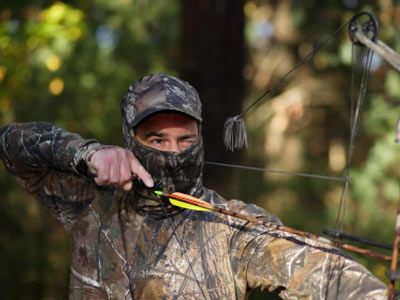The forest is perfectly still. The smell of pine needles and rotting leaves rises into the frosty morning air. The air is so quiet you can hear your heart beat. Suddenly, just in front of you, something rustles. Even before you see it, you instinctively know: This is it. A massive whitetail buck steps into the clearing.
For many sportsmen, rifle hunting is the source of the most idyllic moments possible -- a combination of personal achievement, ethical sportsmanship, connection with nature and beauty. For many others, it's just a pipe dream -- a frontier way of life that now seems too distant to pursue.
Advertisement
What makes a gun a rifle? The term "rifle" is sometimes thrown around to mean any firearm fired from the shoulder. But technically, what makes a gun a rifle is the rifling -- a series of spiral grooves cut into the inside of the barrel. These grooves make the bullet spin when it is fired from the barrel. That spin is important because it improves the bullet's range and accuracy. Think of the way a perfect football pass spirals through the air. Try throwing a football without spin: It flies more slowly, which means it can't travel as far, and it strikes its target with less force. The same principles apply to rifle projectiles.
Rifles are classed based on their action (bolt action, pump action, lever action, etc.) and the caliber, or size, of ammunition they fire. Caliber is usually given as a number -- the diameter of the gun's bore in millimeters or inches. Further specifications might include the number of powder grains the cartridge case is designed to hold. For example, if you're talking about a .25-06 Remington, the first number refers to the caliber. In this case, the gun has a bore with a quarter-inch diameter (6.35 mm). And the cartridge case is designed to hold -- you guessed it -- six grains of powder.
This article takes a look at the development of rifles and rifle hunting, and the historical trends that have shaped modern-day hunting. You'll also learn some strategies to take out into the field and the ethics of hunting. Read on.
Advertisement



